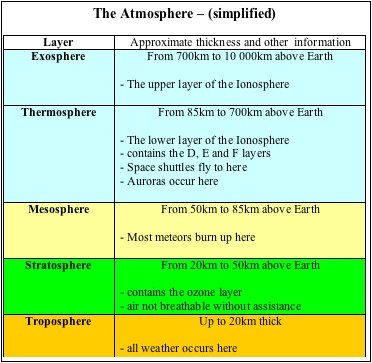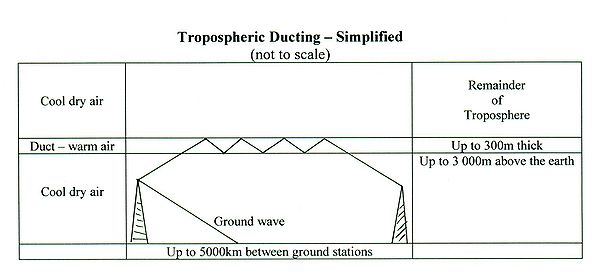Tropospheric ducting
Related wiki pages: Propagation, Bands, Meteor scatter, Lightning scatter, Aurora, Trans-Equatorial Propagation
Basics
The troposphere is the layer of atmosphere closest to earth. It is approximately 10km deep on average, but can extend to 20km in tropical areas.
Tropospheric propagation occurs when signals are reflected scattered or refracted in the troposphere. "Ducting" effects occur primarily because of temperature inversions at a height of between 500m and 1500m, and occasionally up to 3000m. Such inversions are not caused by local "weather" or terrain, but rather by climatic conditions such as frontal boundaries. Temperature inversions are usually layers rather than sharp lines separating regions of different temperature.
The thickness of the inversion layer affects the LUF (Lowest usable frequency) - thinner layers only propagate higher frequencies such as microwaves, thicker layers can be used into lower frequency regions of the spectrum. This table shows inversion thickness and LUF data.
When ducting occurs, signals travel along and within the inversion layer, reflected off its boundaries.
Links:
- Worldwide ducting forecast from DXinfocentre.
| Propagation and radio wave theory | |
| Propagation | Aurora * E-Skip * IPS * Lightning scatter * Meteor scatter * Satellites * Trans-Equatorial Propagation * Tropospheric ducting |
| Interference | QRM * QRN |
| Theory | Electromagnetic Waves * Frequency Wavelength and Period |

